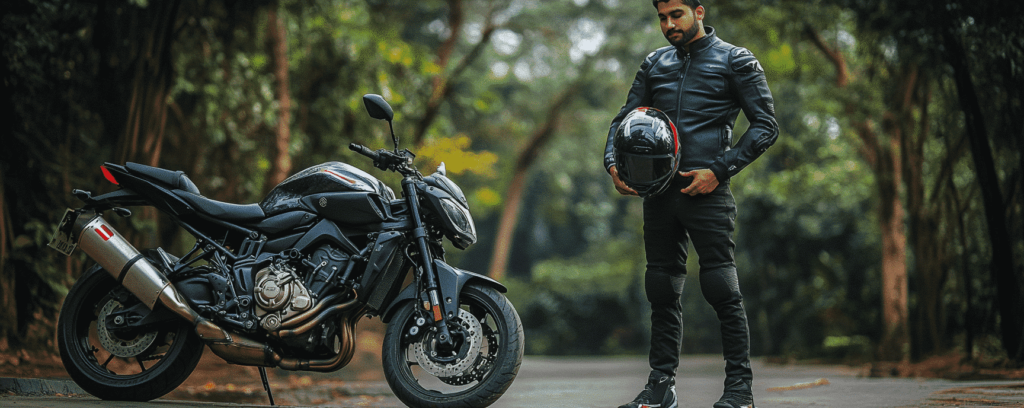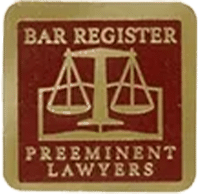
Your Oklahoma Motorcycle Lawyers
Motorcycle Laws in Oklahoma: Here’s What You Need to Know
Oklahoma’s expansive highways are great for riding motorcycles, but many bikers and prospective riders are unaware of all the motorcycle requirements in Oklahoma. Understanding the requirements for a motorcycle license or endorsement and all the Oklahoma motorcycle laws is crucial to keeping everyone on the road safe. What are the motorcycle laws in Oklahoma?
What Are The Motorcycle Laws in Oklahoma?
Because riding a motorcycle is almost as dangerous as it is thrilling, it is important to get this information out to all those who ride a motorcycle now and all those who have aspirations to begin riding one in the future. Ensuring everyone has the proper education about motorcycle requirements in Oklahoma reduces the risk to other motorists and pedestrians.
At Edwards & Patterson Law, our team works hard to protect injured individuals from motorcycle accidents and it is important to us that we help make our community safer. Therefore, we have put together the answers to some of the most common questions asked about Oklahoma motorcycle laws.

Get Your FREE Case Review Today
Contact us today for your free & confidential case review. Our team will help you get the compensation that you deserve.
Can You Drive a Motorcycle at 14?
Those who are at least 14 years old but are under 16 can apply for a motorcycle-only license in Oklahoma. This is distinct from the ability to get a motorcycle endorsement on a driver’s license. To do this, the individual must be at least 16 years old.
A motorcycle license for those between 14 and 16 comes with significant restrictions, including:
- A piston displacement limit of no more than 300 cubic centimeters
- Driving hour restrictions from 4:30 a.m. to 9:00 p.m.
- Approved headgear must be worn
- Must be accompanied by another driver at least 21 years old with a valid motorcycle license and who is always within sight of the motorcyclist
- Must always drive at of below the speed limit and never drive on highways with minimum speed limits
- Must drive under 35 mph
After 30 days, the individual with the restricted license can apply to remove the restriction of being accompanied by another driver.
To receive a motorcycle license between the ages of 14 and 16, the individual must see a Driver License Examiner, present the correct identification and a certificate that proves they have taken a basic riders course, take a vision test, and take a written exam that tests the individual’s understanding of the law.
How Long Is the State-Approved Motorcycle Education Course?
As of August 26, 2016, in order for anyone under the age of 18 to get a motorcycle license, they will first have to take a motorcycle education course, the Motorcycle Safety Foundation course, from a school that has been approved by the state.
This course covers many of the basic safety measures required to keep motorcycle riders safe on the road. The course reviews important riding elements such as braking, shifting gears, and turning safely. It also deals with more advanced safety concepts, such as helping riders identify the safest path for riding their motorcycle, how to share the road safely with other vehicles, and what to do in an emergency.
These courses vary in length depending on the school, but they must include at least 15 hours of in-class activities and riding exercises on the motorcycle. The course must also last at least two to three days. This time should further be broken down to include at least five hours in the classroom and 10 hours on the motorcycle.
Once this course is completed, the road test and written test for a motorcycle license are waived when applying for the license.
Do You Have to Wear a Motorcycle Helmet in Oklahoma?
A helmet is required for any motorcyclist who is under the age of 18. Those motorcyclists who are 18 or older are not required to wear helmets. The helmets worn by those under 18 have to meet certain standards, including lining, padding, and a chin strap.
Although only minors are required to wear helmets according to Oklahoma motorcycle laws, everyone is encouraged to wear a helmet because they keep riders safer in the event of an accident. The risk of head trauma and other severe and life-threatening injuries increases significantly when motorcyclists don’t wear helmets.
An important secondary note: While a helmet is not required for adults, should a motorcycle lack a windshield, the driver, no matter their age, must wear goggles or a face shield.
Can You Lane-Split with a Motorcycle in Oklahoma?
Lane-splitting refers to the practice of riding a motorcycle between the lanes when in heavy, slow traffic. This can save a great deal of time, and may even improve the overall speed of traffic, but it is also a controversial and potentially dangerous activity.
Currently, lane-splitting is legal only in California. That means the current motorcycle laws in Oklahoma do not allow lane-splitting, and bikers who do so are breaking the law.
Though the research and opinions on this topic are split, and the law may change in the future. However, for now, lane-splitting remains against the law and must be avoided.
Should you be in an accident while lane-splitting, you may be judged to be at least partly at fault for the accident, but that does not necessarily mean you would be held entirely accountable for damages or be unable to recover compensation for your own injuries. It would be up to a judge or jury to determine who is more at fault for the accident. Lane-splitting, though, would not help your case.
Have You Been Hurt by Someone Not Following the Requirements?
Knowing the motorcycle laws in Oklahoma can help ensure you ride safely and legally, but that does not necessarily keep you safe if other motorists drive irresponsibly.
If you or someone you love has been harmed in a motorcycle accident in or around Tulsa or McAlester, contact Edwards & Patterson Law immediately to speak with a lawyer who knows motorcycles, knows Oklahoma, and knows how to take care of you. The consultation is free and comes with no strings attached.
Last updated Monday, December 16th, 2024














